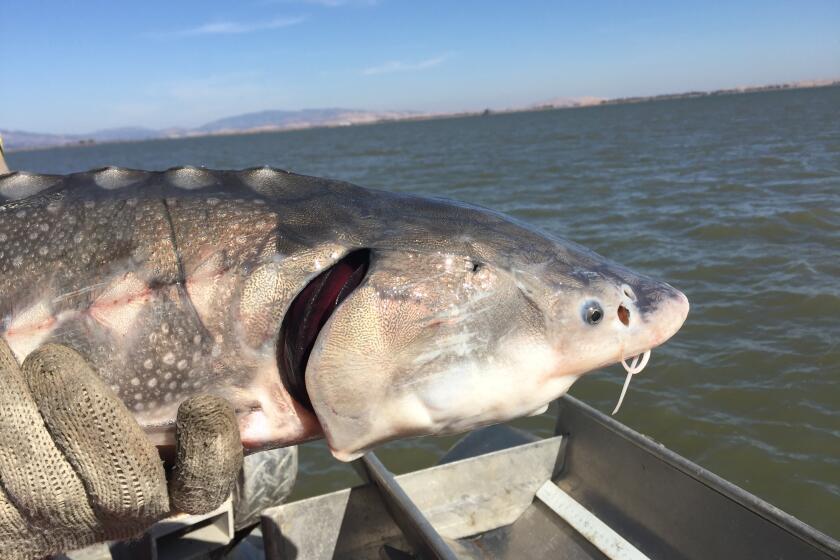Mismeasure for Measure
September 1999: NASA scientists lose track of a $125-million satellite orbiting Mars.
February 2001: Zoo officials at Moorpark College awake to find a massive Galapagos tortoise outside its enclosure and probably thinking how cool it would be to devour the produce section down at Vons and then maybe lumber into a schoolyard and watch everybody freak out.
When will it end?
How many more tragedies and near-tragedies do we need before we finally throw down our ridiculous 12-inch rulers and our Fahrenheit thermometers?
The Mars Climate Orbiter was lost because one group of engineers was using beloved old measurements like inches and feet, not realizing that another was using more up-to-date meters and kilometers--the kind of metric measures used frequently by Martians themselves, as in “Take me to your liter.”
Or maybe not.
The point is: By anyone’s yardstick, we had a failure to communicate.
Which brings us to Clarence.
Clarence is the 75-year-old Galapagos tortoise that the Los Angeles Zoo just loaned for an indefinite period to the Exotic Animal Training and Management Program at Moorpark College.
Everyone in the Moorpark program was excited about the prospect of caring for the great beast.
In Los Angeles, his mate recently had died and a change of scenery would do the old boy good, his keepers felt. Moorpark was just the place.
They warned the people at the college that Clarence was big. Build an enclosure for an animal that weighs in at about 250, they said.
That’s a lot of tortoise. But in the flesh, Moorpark’s Chuck Brinkman was struck by just how huge Clarence really is.
“Huge,” Brinkman said. “We get there and he’s the size of a coffee table.”
It took a good-sized crew to hoist Clarence into and out of Moorpark’s truck.
He weighs a lot more than 250, Brinkman thought.
And so he did.
By the standard used at any American home, health club or hospital, Clarence weighed a good 551 pounds, by my amateur reckoning. By the standard in use virtually everywhere else in the world, he weighed 250 kilograms.
The first night Clarence was in his new home, he wrecked it.
“He just pushed one of the fence poles right over,” Brinkman said. About 6:30 a.m., he was discovered nearby, on the aviary lawn, cogitating.
Clarence is now behind wrought-iron bars that are planted in cement. King Kong couldn’t get out of Clarence’s crib. The fruit stands of Moorpark are safe, but the incident raises the question: Wasn’t the whole country supposed to have gone metric by now? Wasn’t progress supposed to endow terms like “inch” and “pound” with a patina of quaintness, as it had “firkin” and “peck”?
Gerard C. Iannelli is asked such questions all the time.
Overseeing a staff of three in the U.S. Commerce Department in Washington, D.C., Iannelli is responsible for turning the nation metric, inch by inch.
The United States, as metric advocates like to point out, is one of just three nations that haven’t adopted the metric system. The others are Liberia and Myanmar, formerly known as Burma.
Iannelli acknowledges that it has been a longer process than anyone figured 25 years ago, when the United States declared its intention to switch.
“But it’s around us every day,” he insisted. “Everything on supermarket shelves has had metric measurements on the label since 1994. Look at the two-liter Coke bottle! I just saw a coupon for 50 cents off a 500-milliliter bottle of mouthwash--and there was no translation!”
Any manufacturer who wants to tap overseas markets has gone or is going metric, Iannelli said.
Schools are introducing students to decigrams and cubic centimeters. Diet books are talking about grams of fat and protein as if readers could actually picture grams of fat and protein.
But Iannelli isn’t about to work himself out of a job any time soon.
“Some things just are harder to change,” he said. “It might take a generation or two.”
Highway signs are still in miles for distance, miles per hour for speed.
Truckers barreling down the road need to know that the clearance of the bridge up ahead is 13 feet 4 inches, not one-third of a dekameter plus change. Temperatures are still given in good old-fashioned Fahrenheit; for most of us, a sweltering day of 40 degrees Celsius just doesn’t compute.
“Our measurement system becomes part of our system of reality,” he said. “If we changed the system overnight, we’d hear about it.”
As for a 250-kilogram tortoise, Iannelli knows just how he’d handle it.
“I’d know it would be somewhat larger,” he said. “But I’d look at a conversion card just to make sure.”
*
Steve Chawkins can be reached at 653-7561 or at steve.chawkins@latimes.com.
More to Read
Start your day right
Sign up for Essential California for news, features and recommendations from the L.A. Times and beyond in your inbox six days a week.
You may occasionally receive promotional content from the Los Angeles Times.







